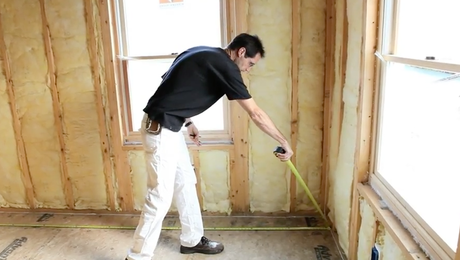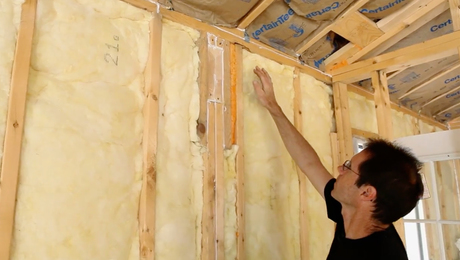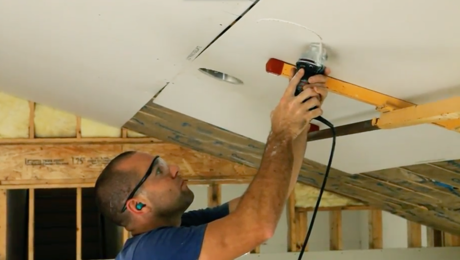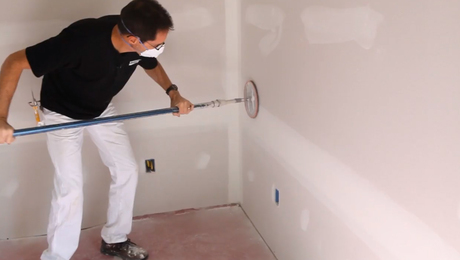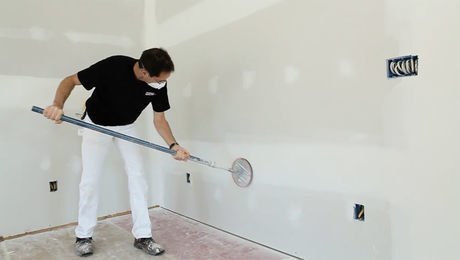Install and Finish Drywall: 7 Fixes Before Delivery
Prep your framing so that drywall sits flat and is easy to fasten securely.
Jump to all the videos in this series
Framing is something that has to be done right. If something is missing or a stud is crooked, maybe a stud is misaligned around windows, it has to be corrected in order to do a better drywalling job. Here are 7 things you can do before you hang your drywall to make the job go smoother.
1. Flatten protruding nail heads and hardware
There are certain things that I look for. These nailheads sticking out are going to either create a little bump or damage my drywall when I fasten it. It’s the same thing with these hurricane ties. They’re quite a thick piece of metal, and the heads on the nails are also very thick. They’re creating a little bit of a bump on the ceiling as well.
2. Fix misaligned framing
Whenever you have a double stud, having them aligned properly is important. If one of these is out, even an 1/8″ you’re going to have a small bump.
3. Install missing blocking and nailers
As I check for issues with the framing it’s important all of the blocking is in place. The blocking is for inside corners and along ceiling edges. For example, the carpenter scabbed on some extra 2×6 pieces. And that’s fine. That’s all we really need here. If you look at the cathedral, along the edge he has done something similar. That’s good.
4. Shim or flatten protruding metal plates
As I was doing my walk through, I noticed some of the walls had metal plates over them. My first thought is “well, I don’t like it.” There’s going to be a bump in the wall. If I put a fastener above or below it’s going to pop. This particular one is behind the kitchen cabinet, so I’m not too worried. If it is an exposed wall, you may want to do a little shimming to blend the bump in.
5. Be sure wires are well inside boxes
Another of my concerns is electrical wires in outlet boxes. Even when rolled up and pushed but they’re subject to being damaged with a router. We hang the drywall over this, stick the router in there to find the edge and if the wires aren’t pushed in a little further they could get cut.
Little things like that you want to try to correct before the drywall is hung.
6. Have a carpenter handy
I like to have a carpenter on the job site when we’re hanging the drywall. He could be out building steps or the railings on a deck. If we run into a problem that we didn’t see before, it’s nice to have the carpenter available to come in and correct it. Like a missing nail or a bump in the wall, or little things like that, it really helps
7. Create a staging area
Plan to have all the material in one room. This will probably be the last room you hang in. It will be the work room. The benefits of stacking in the larger room are we can distribute the drywall by the size of the sheet, and as you need it. This allows you to go into the other rooms without having to deal with other drywall panels being stacked and in your way.
This will probably be the last room you hang in. It will be the work room. The benefits of stacking in the larger room are we can distribute the drywall by the size of the sheet, and as you need it. This allows you to go into the other rooms without having to deal with other drywall panels being stacked and in your way.
Videos in the Series
-
Series Introduction: Install and Finish Drywall
-
Install and Finish Drywall: 7 Tips for an Accurate Takeoff
-
Install and Finish Drywall: 7 Fixes Before Delivery
-
Install and Finish Drywall: 9 Secrets to an Effortless Install
-
Install and Finish Drywall: 9 Rules for Hanging a Vaulted Ceiling
-
Install and Finish Drywall Series: 7 Tips for the Best Basic Finish
-
Install and Finish Drywall Series: 6 Steps to a Level-5 Finish


